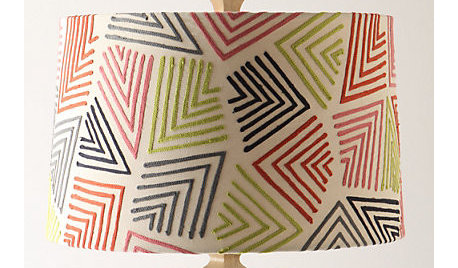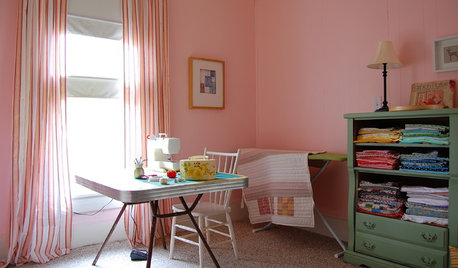How to add or subtract stitches in pattern?
ct_iris
16 years ago
Related Stories

PATTERNFlame Stitch Patterns Fire Up Home Design
Missoni tapped its power long ago, and now designers like Jonathan Adler are hot for dynamic flame stitch patterns around the home
Full Story
PRODUCT PICKSGuest Picks: Stitched to Perfection
A few stitched details add beauty and charm to these 19 home accessories
Full Story
STUDIOS AND WORKSHOPSA Stitch in Time: Creative Sewing Spaces
Sewing rooms have become popular again as people of all ages embrace simple crafts they can do at home
Full Story
DECORATING GUIDESAdd Geometric Rugs for Instant Energy
A powerfully patterned rug is all you need to wake up a snoozy room design
Full Story
PATTERN17 Gorgeous Ways to Work In a Patterned Area Rug
Add spark underfoot and pull a room together all around with a patterned rug as bold or subtle as you please
Full Story
COLORHow to Add Color if You’re Color Shy
Here’s how to break into the world of color without breaking a sweat
Full Story
PATTERNPattern Play: Masculine Ruggedness, Modernized
4 designer tips make mixing fabric patterns fun
Full Story
PATTERNFreshen Up With Floral Prints
Add some spring flower power with these floral-inspired designs
Full Story
TILEMoor Tile, Please!
Add an exotic touch with Moroccan tiles in everything from intricate patterns and rich colors to subtle, luminous neutrals
Full Story
PRODUCT PICKSGuest Picks: Weave In the Tapestry Trend
Give your home decor the look of woven wonders even if you don't want a real stitch in sight
Full Story





sheilajoyce_gw
Miss EFF
Related Professionals
Charleston Furniture & Accessories · Framingham Furniture & Accessories · Manhattan Furniture & Accessories · Davidson Furniture & Accessories · Little Chute Furniture & Accessories · Pinehurst Furniture & Accessories · Sahuarita Furniture & Accessories · Fort Smith Interior Designers & Decorators · Garden City Interior Designers & Decorators · Hercules Interior Designers & Decorators · Lake Elsinore Interior Designers & Decorators · Westbury Interior Designers & Decorators · Honolulu Home Stagers · Key Biscayne Home Stagers · Sterling Heights Staircases & Railingsct_irisOriginal Author
Lindsey_CA
threejsmom
ct_irisOriginal Author